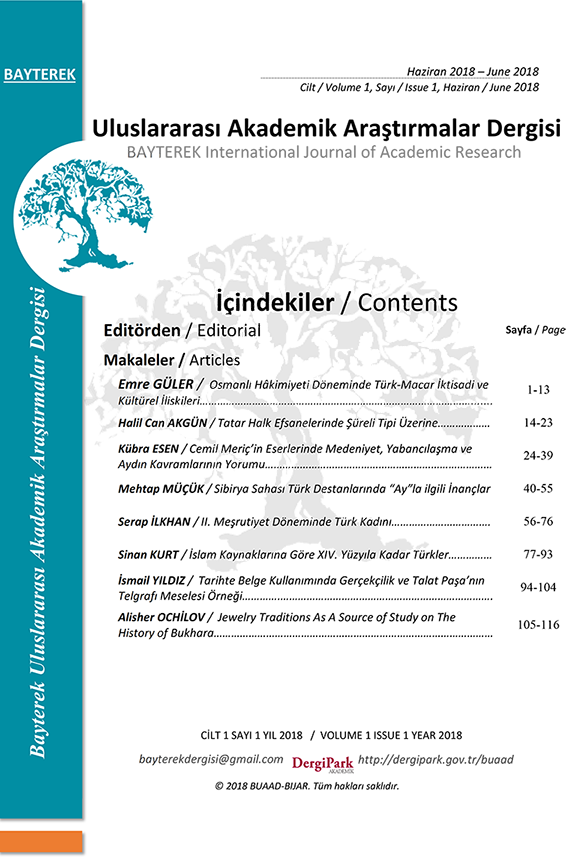
Bayterek Uluslararası Akademik Araştırmalar Dergisi
Yazarlar: Ercimet SARIAY
Konular:Sosyal
Anahtar Kelimeler:Ottoman Empire,Tanzimat Edict,Legalization Movements,Law
Özet: Economic, political and social changes in Europe also affected the Ottoman Empire and this change spread to the Ottoman legal understanding. As a result, new legal norms and institutions emerged in the Ottoman Empire. The Ottoman Empire, as in all other fields, followed the legalization movements that took place in Europe. In this context, the modernization of the Ottoman Empire in the legal sense took place in accordance with the content and purpose of the Tanzimat Edict. In the Tanzimat and later periods, both the traditional and modern methods of legalization in the fields of public law and private law were given importance. It was aimed to create a homogeneous Ottoman society with the enactments, but the desired aim could not be achieved. However, the legal change that emerged was an important step towards becoming a state of law. In this study, the sources and methods of the legalization studies in the Ottoman Empire after the Tanzimat were emphasized, and the historical mission, ideology and institutions of the legalization movements in the Ottoman Empire after the Tanzimat Edict were discussed. The economic, political and social changes that emerged in Europe after the French Revolution brought new legal norms. The Ottoman Empire was also affected by this situation and tried to adapt the European rules to its structure. The legalization movements initiated in line with the principles envisaged by the Tanzimat Edict influenced the interaction with Europe. Changing economic, political and social relations have revealed the necessity of new regulations. On the other hand, it was aimed to institutionalize an ideology which was explained by the codification movements in the form of Ottoman society by the Tanzimat Edict. Again in this context, as a natural result of legalization movements, new institutions were established in the Ottoman legal system. These institutions, in particular the courts and local councils, had important roles in the functioning of the justice mechanism. Important arrangements were made in the field of law after the Tanzimat. It is possible to divide these regulations in the form of legalization and changes in the judicial system. New ones were added to the existing the sharia courts, community courts and consular courts of embassies established through capitulations. The trade council, which was first established under the Ministry of Commerce in 1840, was transformed into a commercial court in 1847 and 1848. The most radical change in the area of the courthouse was made in 1864 with the provincial regulations. Accordingly, criminal and civil courts were established in all provinces. In addition, the courts established under the name parliament-i deâvî, mecca-i appeal, divan-ı appeal in the provinces and sanjaks served as both first instance and appeal courts. With the Law of Organization of Mehakim-i Nizamiyen, which was enacted in 1879, these courts were restructured and for the first time an institution of public authority (prosecution) was established. In the same period, the jurisdiction of the Sharia courts was narrowed and the newly established courts were expanded. Since the proclamation of the Tanzimat, an intense legalization was carried out in almost every field of law. In addition to the legislative efforts carried out under the influence of the West, important legal arrangements based on the traditional understanding of law were made. The difference of the period that began in the Ottoman history with the Tanzimat Edict and developed with the Edict of Islahat is that it takes into consideration the civil values which form the basis of Europe and the concepts of being a state of law and individual rights which are necessary for the modern state. Both edicts can be said to be a social contract to determine the rights and duties between the individual and the state. The intention of recognizing the fundamental rights and freedoms of the individual indicates a new era for the Ottoman Empire.